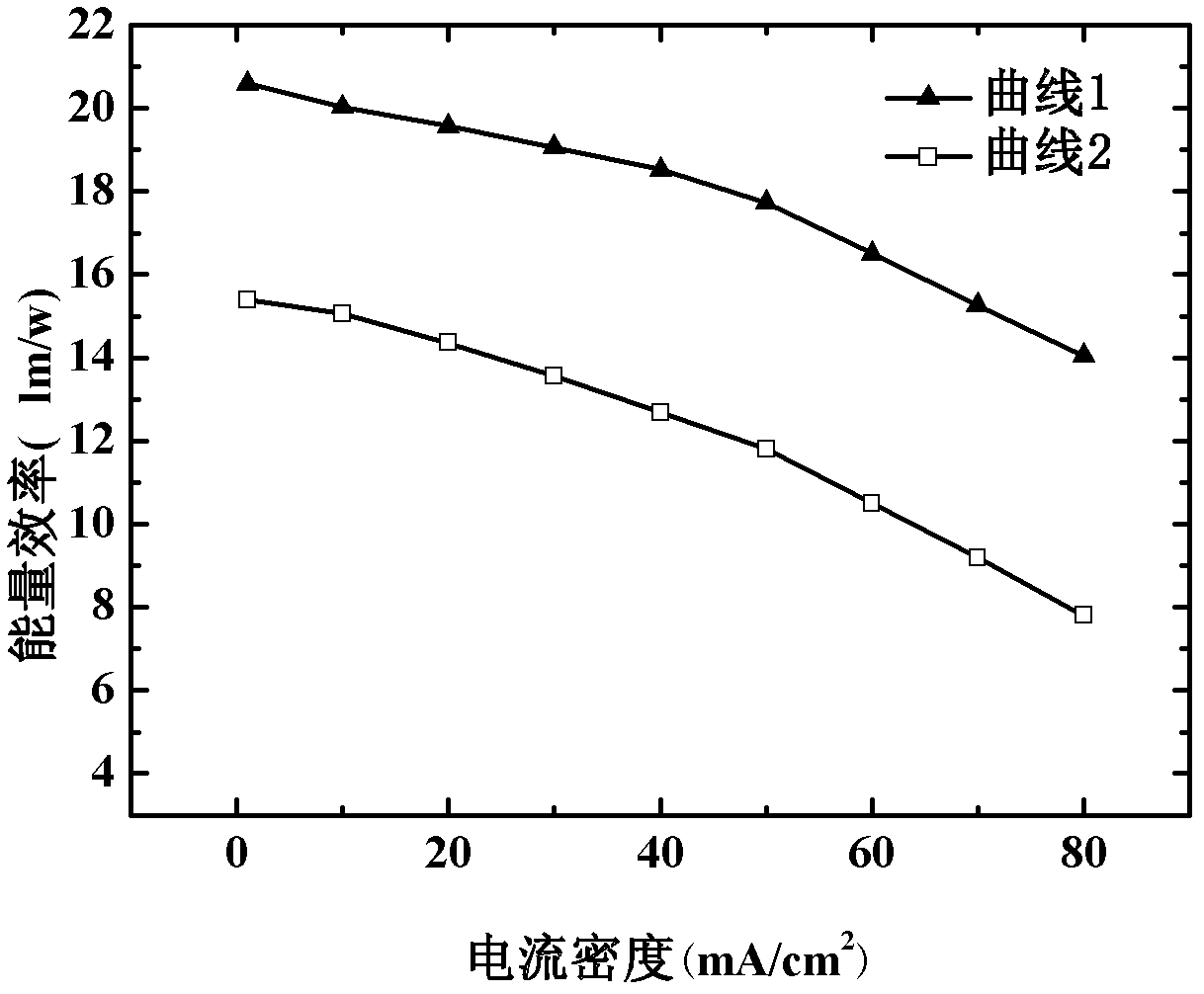Organic light-emitting device and manufacturing method thereof
An electroluminescence device and luminescence technology, applied in the direction of electric solid-state devices, chemical instruments and methods, semiconductor/solid-state device manufacturing, etc., can solve the problems of film layer damage, regeneration ability attenuation, cost increase, etc. The ability to inject, reduce the process steps, and facilitate the effect of injection and transmission
- Summary
- Abstract
- Description
- Claims
- Application Information
AI Technical Summary
Problems solved by technology
Method used
Image
Examples
preparation example Construction
[0047] The preparation method of the above-mentioned laminated organic electroluminescent device comprises the following steps:
[0048] S1. First conduct photolithographic treatment on the conductive anode substrate, and then use detergent, deionized water, acetone, ethanol, and isopropanol to ultrasonically clean each for 15 minutes to remove organic pollutants on the glass surface
[0049] S2. After cleaning, perform oxygen plasma treatment on the conductive anode substrate for 5-15 minutes, and the power is 10-50W;
[0050] S3. Using an evaporation process, the surface of the conductive anode substrate treated with oxygen plasma in step S2 is sequentially laminated with an evaporated hole injection layer, a first hole transport layer, a first light emitting layer, a first electron transport layer and a first electron injection layer. layer;
[0051] S4, then, prepare a charge regeneration layer on the surface of the first electron injection layer, the charge regeneration ...
Embodiment 1
[0062] The organic electroluminescent device structure of this embodiment: glass / ITO / MoO 3 / NPB / Alq 3 / TAZ / CsF / (TAZ:MoO 3 / MoO 3 / TCTA:MoO 3 ) / NPB / Alq 3 / TAZ / CsF / Al.
[0063] The preparation process of the organic electroluminescent device is as follows:
[0064] First, photolithographically process the ITO glass substrate, cut it into the required size, and then use detergent, deionized water, acetone, ethanol, and isopropanol to sonicate for 15 minutes each to remove organic pollutants on the glass surface;
[0065] After cleaning, conduct proper treatment on the conductive substrate: treat the conductive anode layer (ITO) with oxygen plasma, the treatment time is 5min, and the power is 30W;
[0066] On the surface of the ITO layer, the vapor-deposited hole injection layer (the material is MoO 3 , thickness is 40nm), the first hole transport layer (material is NPB, thickness is 40nm), the first light-emitting layer (material is Alq 3 , thickness is 30nm), the first e...
Embodiment 2
[0071] The organic electroluminescent device structure of this embodiment: glass / IZO / WO 3 / TCTA / BCzVBi / Bphen / Cs 2 CO 3 / (TPBi:MoO 3 / MoO 3 / NPB:MoO 3 ) / NPB / DCM / Bphen / CsN 3 / Ag.
[0072] The preparation process of the organic electroluminescent device is as follows:
[0073] First, photolithographically process the IZO glass substrate, cut it into the required size, and then use detergent, deionized water, acetone, ethanol, and isopropanol to sonicate for 15 minutes each to remove organic pollutants on the glass surface;
[0074] After cleaning, conduct appropriate treatment on the conductive substrate: oxygen plasma treatment of the conductive anode layer (IZO), the treatment time is 5min, and the power is 30W;
[0075] On the surface of the IZO layer, the vapor-deposited hole injection layer (the material is WO 3 , thickness is 20nm), the first hole transport layer (the material is TCTA, the thickness is 60nm), the first light-emitting layer (the material is BCzVBi, t...
PUM
| Property | Measurement | Unit |
|---|---|---|
| Thickness | aaaaa | aaaaa |
| Thickness | aaaaa | aaaaa |
| Thickness | aaaaa | aaaaa |
Abstract
Description
Claims
Application Information
 Login to View More
Login to View More - R&D
- Intellectual Property
- Life Sciences
- Materials
- Tech Scout
- Unparalleled Data Quality
- Higher Quality Content
- 60% Fewer Hallucinations
Browse by: Latest US Patents, China's latest patents, Technical Efficacy Thesaurus, Application Domain, Technology Topic, Popular Technical Reports.
© 2025 PatSnap. All rights reserved.Legal|Privacy policy|Modern Slavery Act Transparency Statement|Sitemap|About US| Contact US: help@patsnap.com


